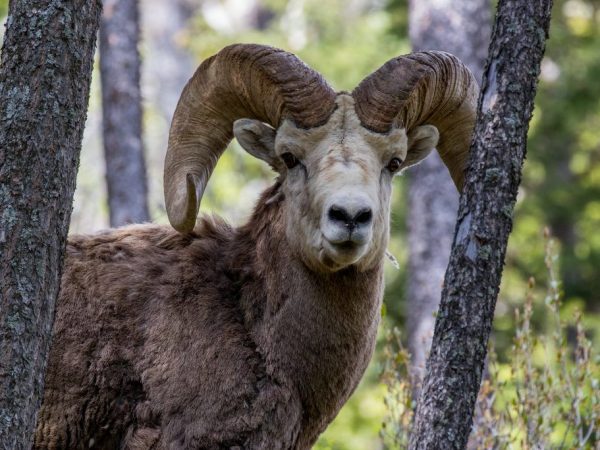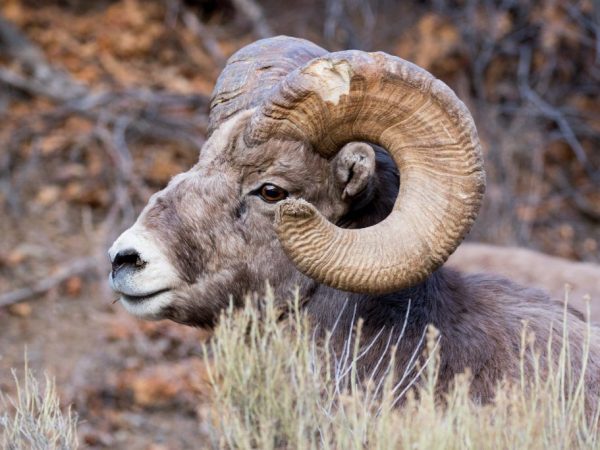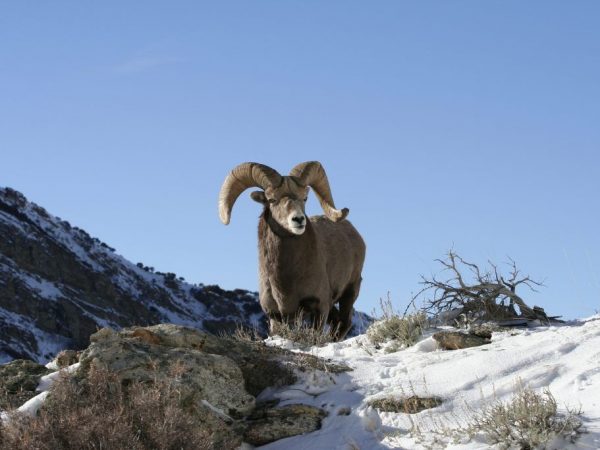Altai mountain sheep
Sheep are animals known for their stubborn nature and unwavering mindset to go forward. The most famous representative of this animal species is the Altai mountain sheep.

Characteristics of the Altai mountain sheep
This breed is the largest of all possible subspecies of the Argara ram. Today it is considered almost extinct in its pure form, and the hybrids of the Altai breed with domestic sheep are valuable specimens.
Position in society
Due to the fact that the Altai mountain sheep practically disappeared from the face of the earth, they were given the first category, because soon the breed may simply cease to exist.
That is why the Altai mountain sheep is included in the Red Book. It was registered there back in the days of the USSR and the RSFSR and is still under the strict protection of the reserve.
Appearance
Individuals are the largest horned of their species, in addition, this breed is famous for the fact that males have large and massive horns.
The structure of the body of the animal is quite strong, the skeleton and muscles are well developed, the rams are large and strong. The male reaches a height of over 122 cm at the withers, and the female - 114 cm. These 10 cm differences are sometimes difficult to notice, since often females and males are about the same height. In kilograms, the male is very different from the female: the female can weigh at most 102-104 kg, while the male can weigh 200-210 kg. Both representatives of the Altai mountain sheep genus have horns.

Rams of the Altai breed are distinguished by massive horns
Horns are the pride of this breed. In old rams, they can reach more than 152 cm, while their girth will be 56 cm, and they will weigh 23-24 kg. Of course, females have smaller horns and are not as dangerous as the male's. On average, the length of the female's horns can reach 120-130 cm. Moreover, their girth is 25-35 cm, and their weight is from 10 to 15 kg. They change color depending on the season. Usually, the body cover has a brown or brown color closer to cold weather, and in the spring-summer it changes to light with an admixture of gray and red tones.
In this species, the belly and back of the body are always slightly lighter. In this case, most often white and gray shades prevail, sometimes with an admixture of red. Experts noted that older members of this species are often much darker than everyone else in the pen. In summer, animals are characterized by a molting period, they can also change their colors during this period from a light, almost white, to a muddy reddish hue. At such moments, rams can be a little aggressive, as their skin itches a lot due to the shedding period. A detailed description will help you understand all the intricacies.
Habitat
Today Altai mountain sheep live in 3 small areas in different parts of the world. Each territory is carefully guarded. You can meet these amazing animals:
- on the border between countries such as Mongolia and China;
- on a relatively small ridge of Saylyugem;
- in the Chulshman mountains.
The main places of residence and breeding of this species are steep mountains and mountain steppes.Some lucky ones say that they saw them on the slopes of the mountains above the sea at an altitude of 2-3 thousand meters.

Habitats of the Altai mountain sheep
They do not need any forest or other vegetation: they like ordinary shrubs of birch trees from the round-leaved subspecies, willows. But because of their great love for this plant, they almost completely ate it, as a result, birches are also considered a lost plant in the territory of the pen. Basically, today in the places of residence of this species there are such cultures:
- small-grass cereals;
- cereals and legumes;
- cereal-cobresia.
These are the 3 main components that mainly constitute the nutritious diet of wild species and are the main means of survival. In hot periods, these animals can eat 2-3 times a day, but, surprisingly, they approach the watering place 1-2 times for 3 days.
The number of individuals and how the situation has changed
At the end of the 18th century, mountain sheep were seen on the Tigiretsky ridge and on the nearby mountain ranges. Then, at the beginning of the 19th century, they said that they live in the mountains, which are located near the Argut River and on the Chulshman plateau.
Already at the end of the 19th century and at the beginning of the 20th it was said that they had moved again, this time to Saylyugem. At first, the number of Altai rams was 600, then the number dropped sharply to 230-245. In 1995, there were 320 of them, including adults and calves.
Possible limiting factors
The first fact that experts highlight is anthrogenic influence in various manifestations. Today, the leadership stage is occupied by the direct rejection (displacement) of argali from their native places of residence. In turn, goats and yaks give mountain rams little chance to master the pasture territory well in difficult places, which are quite difficult to get to, and, as a result, they are completely pushed to absolutely barren mountain peaks. The number of livestock exceeds all available limits of opportunities and real opportunities for pastures, which in turn leads to degradation. As a result, the feeding and feeding of wild animals is greatly impaired.
The second factor that influences the number of argali is the scale of poaching. Even though the animals are protected, some still manage to kill them. They shoot animals in almost all areas of their habitat. A significant role in this whole process was played by large geological exploration work, which was carried out in the 70-80s close to the habitats and food of sheep, because of which they could not receive a sufficient amount of food.
The last factor that has quite strongly influenced the population and which people cannot control is the weather. The past few decades have been too difficult for animals. Today, their death from natural conditions, especially in winter, has increased critically. Due to the fact that animals cannot find food for themselves, it is difficult for them to overcome mountain slopes; already in the middle of the cold period, they begin to die. All these factors significantly influenced the population of these animals. Soon this can lead to the complete disappearance of the species.
Breeding the breed
They tried to breed the described variety in zoos in Germany and America, but the animals always died after living for several months, or even days. The maximum representative of the genus Argali lived in captivity for 6 years at the Biological Institute of Siberia, Russia.
Obviously, mountain sheep should be kept close to their natural habitat, or similar conditions should be created, and good care should be provided. The rocks stick together in large herds. Females always walk separately. Males always try to walk in such a way as to be able to protect their females and young in any situation.
Usually, the mating season begins in November, the female bears cubs for 5 months, and already in early May gives birth to only one lamb. Argali lambs are born completely independent and immediately stand on their feet.
Altai mountain rams are an endangered breed. It is unique due to its size: its representatives have a large body mass and voluminous horns. Individuals live only on high rocks.

